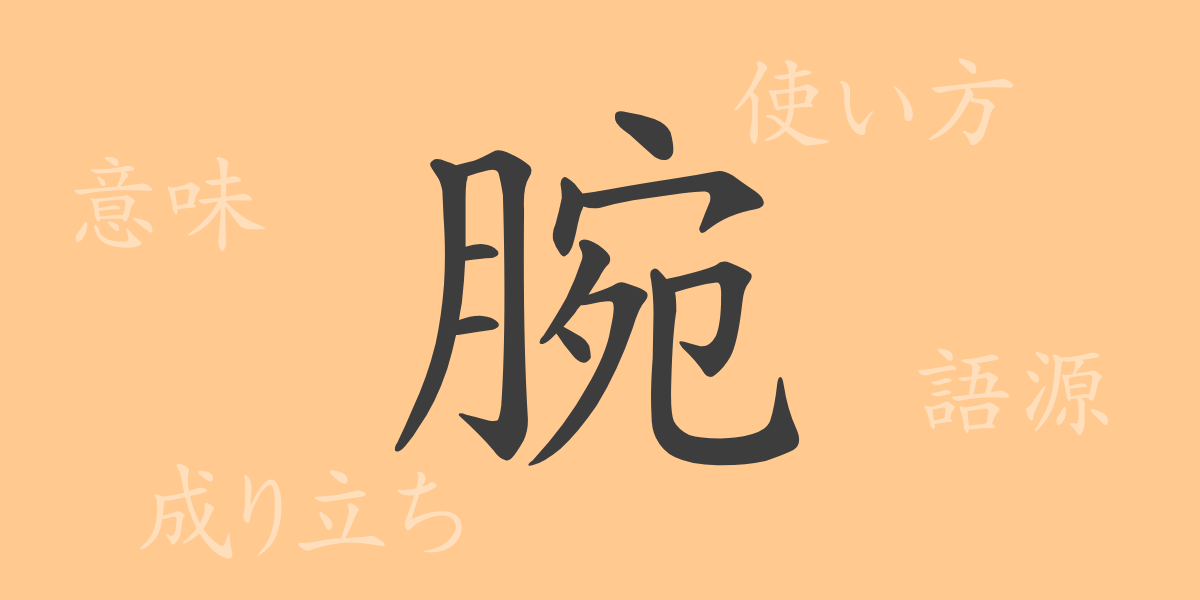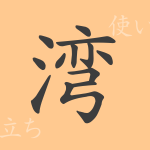Japan’s written culture is profound, and among its elements, kanji (Chinese characters) are renowned for their complexity and beauty. The commonly used kanji “腕” (うで, ude) is a word frequently encountered in daily life, but it carries a rich history and meaning behind it. In this article, we will explore the deep world of this single character, starting from the etymology of “腕” (うで, ude), its meaning, usage, readings, and even the idioms and phrases that include “腕” (うで, ude).
The Origin (Etymology) of 腕 (うで, ude)
The character “腕” (うで, ude) was originally used in ancient China to refer to the upper limbs of a person. This kanji is composed of the “肉” (にく, niku) radical combined with the form “宛” (あて, ate), and it originally depicted the act of bending an arm. Over time, “腕” (うで, ude) evolved to also signify skills or abilities, and it came to be used in various expressions.
The Meaning and Usage of 腕 (うで, ude)
In contemporary Japanese, “腕” (うで, ude) not only refers to a literal part of the body but also carries metaphorical meanings. When someone is described as “腕がいい” (うでがいい, ude ga ii), it means that the person is highly skilled or capable. Additionally, the expression “腕を振るう” (うでをふるう, ude wo furuu) means to make use of one’s skills to do something. Thus, “腕” (うで, ude) is a highly expressive kanji with both direct and abstract meanings.
Readings, Stroke Count, and Radical of 腕 (うで, ude)
Understanding the readings and structure of the kanji “腕” (うで, ude) is crucial for a deeper comprehension of its usage.
- Readings: The on’yomi (音読み, Chinese reading) is “ワン” (わん, wan), and the kun’yomi (訓読み, Japanese reading) is “うで” (うで, ude).
- Stroke Count: The kanji “腕” (うで, ude) consists of 12 strokes.
- Radical: The radical is “肉偏” (にくづき, nikuzuki).
Idioms, Phrases, and Proverbs Using 腕 (うで, ude) and Their Meanings
There are many idioms, phrases, and proverbs that include “腕” (うで, ude) and express a person’s skill or ability. “腕に覚えがある” (うでにおぼえがある, ude ni oboe ga aru) means to have confidence in one’s skills, “腕をひそめる” (うでをひそめる, ude wo hisomeru) means to hide one’s abilities, and “腕が鳴る” (うでがなる, ude ga naru) describes a state of eagerly wanting to showcase one’s skills. Through these expressions, it is clear that “腕” (うで, ude) is deeply rooted in people’s daily lives and communication.
Summary of 腕 (うで, ude)
The kanji “腕” (うで, ude) has played a significant role in Japanese communication through its shape and the evolution of its meaning. From its basic meaning of referring to a part of the body to its abstract concept of representing a person’s skills or abilities, “腕” (うで, ude) has a wide range of uses. Understanding the rich history and culture embedded in this single character allows us to use language more richly and effectively.
























